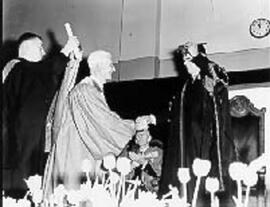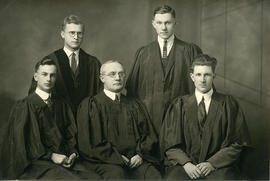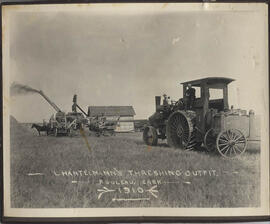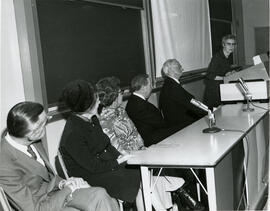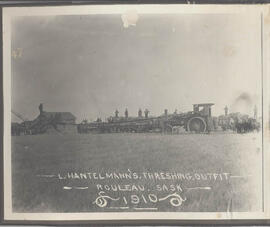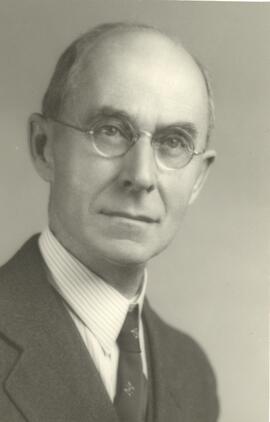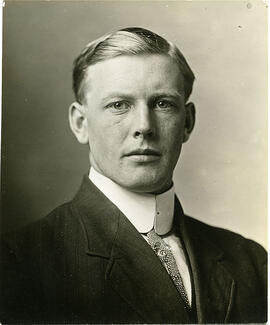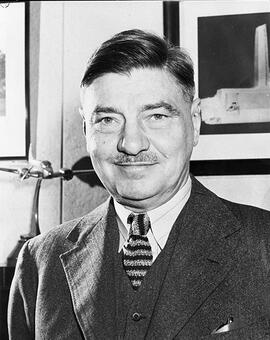Dr. John Boyle Ritchie - Portrait
- A-3930
- Item
- [1955?]
Head and shoulders image of Dr. John Boyle Ritchie, honourary Doctor of Laws degree recipient at the Special Convocation held in connection with the formal opening of University Hospital in 1955. Image possibly taken near time of presentation.
Bio/Historical Note: Dr. John Boyle Ritchie was born in Bruce County, Ontario and spent most of his boyhood in Port Arthur (now Thunder Bay). Graduating in Arts in 1910 and Medicine in 1916 from Manitoba University, he then joined the Canadian Army Medical Corps and went overseas. On his return to Canada he was posted to Calgary to organize a military hospital in that city. Upon the end of World War I Dr. Ritchie retired with the rank of Major, and was awarded the Mons and Vimy Medals. Later he received the Efficiency Decoration for his services. After practicing in Saltcoats, Saskatchewan, in 1919, Dr. Ritchie moved to Regina in 1920 to begin practice in association with Dr. Hugh MacLean. In 1934 he was chairman of the Regina Public School Board, in which capacity he was instrumental in the promotion of the inoculation of diphtheria toxoid in the Regina area, which eliminated diphtheria from that area. Dr. Ritchie died in Regina in 1961.





